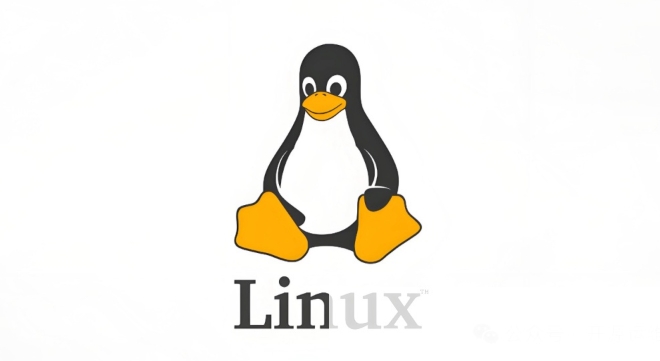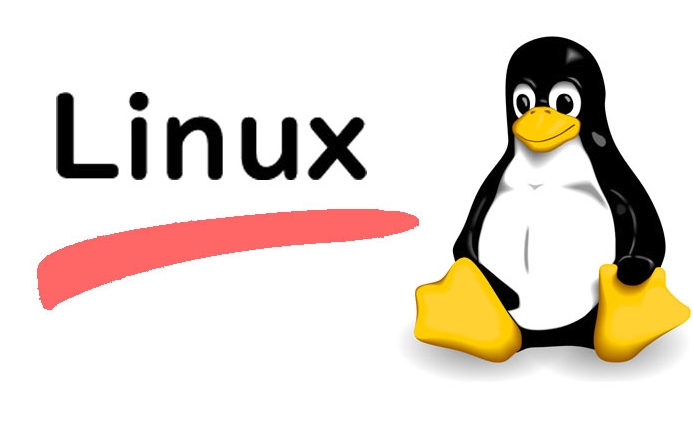The Linux distribution is a complete operating system based on the Linux kernel and integrates various software, tools and interfaces. It not only contains the kernel, but also integrates components such as command line tools, graphical interfaces, package managers, etc., such as Ubuntu, Fedora, Debian, Arch Linux, CentOS, etc. Distribution types include: 1. Ubuntu and Linux Mint for desktop users; 2. CentOS and Debian for servers; 3. Arch Linux and Manjaro for scrolling updates; 4. Lightweight Lubuntu and Xubuntu. When choosing, it should be determined based on the purpose and technical level: novices recommend Ubuntu or Linux Mint, server priority is CentOS or Debian, new users are suitable for Arch or Manjaro, and lightweight versions are available for old devices. Different distributions have differences in package management systems, update policies, community support and default configurations. For example, Ubuntu uses apt, CentOS uses dnf, Arch uses pacman, and you should finally choose the appropriate distribution according to your needs to get the best experience.

Simply put, a Linux distribution (Linux Distribution) is an operating system based on the Linux kernel. It not only includes the Linux kernel itself, but also includes various software, tools, libraries, drivers, and user interfaces, etc., and combines it into a complete operating system for you to install and use.

What is a Linux distribution?
Linux itself is just a kernel that is responsible for managing hardware resources and system processes. A complete operating system requires more things, such as command line tools, graphical interfaces, package managers, desktop environments, etc. Packing these things together, adding the installer and documentation, creates a "Linux distribution".
Common distributions such as Ubuntu, Fedora, Debian, Arch Linux, CentOS, etc. Although they are all based on the Linux kernel, they each have different target users, package management methods, update policies and system configuration methods.

Several common Linux distribution types
Different distributions are suitable for different purposes and can be roughly divided into the following categories:
- Distributions for desktop users : such as Ubuntu and Linux Mint, which focus on ease of use and graphical interface experience, are suitable for users who are new to Linux.
- Server-oriented distributions : such as CentOS, Debian, Rocky Linux, they pay more attention to stability and security and are suitable for long-term server environments.
- Rolling update distributions : For example, Arch Linux, Manjaro, these systems keep the software version up to date, suitable for users who like to try new ones.
- Lightweight distributions : such as Lubuntu, Xubuntu, and Puppy Linux, suitable for scenarios with old hardware or low resource usage requirements.
How to choose the right Linux distribution?
Which distribution to choose depends mainly on your usage scenario and technical level. Here are a few practical suggestions:

- Newbie recommend starting with Ubuntu or Linux Mint : these two distribution communities are active, rich in information, and it is easy to find solutions to problems when encountering problems.
- Server uses are preferred: CentOS or Debian : CentOS and Debian are stable in the server field and have a wide range of enterprise-level applications.
- If you like new software, you can try the rolling distribution Arch or Manjaro : rolling updates mean that you can use the latest software version as soon as possible.
- For old computers or low-end devices, you can try a lightweight distribution : such as Lubuntu or Xubuntu, which occupies less resources and runs smoother.
Key Differences between Distributions
Although they are all based on the Linux kernel, different distributions have obvious differences in the following aspects:
- Package management systems : Ubuntu and Debian use
.debpackages andapttools; Fedora and CentOS use.rpmpackages anddnf; Arch usespacman. - Update strategy : Some distributions pursue stability, with few updates but have been rigorously tested; some updates frequently to keep the software up-to-date.
- Community and Documentation Support : Ubuntu and Fedora have very active communities and rich documentation, with low learning barriers.
- Default configuration and desktop environment : The desktop environments installed by default in different distributions (such as GNOME, KDE, XFCE) are also different, which affects the user experience.
Basically that's it. There are many types of Linux distributions, but choosing the right one that suits you can help you get started and enjoy the freedom and flexibility brought by Linux.
The above is the detailed content of what is a linux distribution. For more information, please follow other related articles on the PHP Chinese website!

Hot AI Tools

Undress AI Tool
Undress images for free

Undresser.AI Undress
AI-powered app for creating realistic nude photos

AI Clothes Remover
Online AI tool for removing clothes from photos.

Clothoff.io
AI clothes remover

Video Face Swap
Swap faces in any video effortlessly with our completely free AI face swap tool!

Hot Article

Hot Tools

Notepad++7.3.1
Easy-to-use and free code editor

SublimeText3 Chinese version
Chinese version, very easy to use

Zend Studio 13.0.1
Powerful PHP integrated development environment

Dreamweaver CS6
Visual web development tools

SublimeText3 Mac version
God-level code editing software (SublimeText3)

Hot Topics
 Install LXC (Linux Containers) in RHEL, Rocky & AlmaLinux
Jul 05, 2025 am 09:25 AM
Install LXC (Linux Containers) in RHEL, Rocky & AlmaLinux
Jul 05, 2025 am 09:25 AM
LXD is described as the next-generation container and virtual machine manager that offers an immersive for Linux systems running inside containers or as virtual machines. It provides images for an inordinate number of Linux distributions with support
 How to create a self-signed SSL certificate using OpenSSL?
Jul 03, 2025 am 12:30 AM
How to create a self-signed SSL certificate using OpenSSL?
Jul 03, 2025 am 12:30 AM
The key steps for creating a self-signed SSL certificate are as follows: 1. Generate the private key, use the command opensslgenrsa-outselfsigned.key2048 to generate a 2048-bit RSA private key file, optional parameter -aes256 to achieve password protection; 2. Create a certificate request (CSR), run opensslreq-new-keyselfsigned.key-outselfsigned.csr and fill in the relevant information, especially the "CommonName" field; 3. Generate the certificate by self-signed, and use opensslx509-req-days365-inselfsigned.csr-signk
 7 Ways to Speed Up Firefox Browser in Linux Desktop
Jul 04, 2025 am 09:18 AM
7 Ways to Speed Up Firefox Browser in Linux Desktop
Jul 04, 2025 am 09:18 AM
Firefox browser is the default browser for most modern Linux distributions such as Ubuntu, Mint, and Fedora. Initially, its performance might be impressive, however, with the passage of time, you might notice that your browser is not as fast and resp
 How to troubleshoot DNS issues on a Linux machine?
Jul 07, 2025 am 12:35 AM
How to troubleshoot DNS issues on a Linux machine?
Jul 07, 2025 am 12:35 AM
When encountering DNS problems, first check the /etc/resolv.conf file to see if the correct nameserver is configured; secondly, you can manually add public DNS such as 8.8.8.8 for testing; then use nslookup and dig commands to verify whether DNS resolution is normal. If these tools are not installed, you can first install the dnsutils or bind-utils package; then check the systemd-resolved service status and configuration file /etc/systemd/resolved.conf, and set DNS and FallbackDNS as needed and restart the service; finally check the network interface status and firewall rules, confirm that port 53 is not
 How would you debug a server that is slow or has high memory usage?
Jul 06, 2025 am 12:02 AM
How would you debug a server that is slow or has high memory usage?
Jul 06, 2025 am 12:02 AM
If you find that the server is running slowly or the memory usage is too high, you should check the cause before operating. First, you need to check the system resource usage, use top, htop, free-h, iostat, ss-antp and other commands to check CPU, memory, disk I/O and network connections; secondly, analyze specific process problems, and track the behavior of high-occupancy processes through tools such as ps, jstack, strace; then check logs and monitoring data, view OOM records, exception requests, slow queries and other clues; finally, targeted processing is carried out based on common reasons such as memory leaks, connection pool exhaustion, cache failure storms, and timing task conflicts, optimize code logic, set up a timeout retry mechanism, add current limit fuses, and regularly pressure measurement and evaluation resources.
 Install Guacamole for Remote Linux/Windows Access in Ubuntu
Jul 08, 2025 am 09:58 AM
Install Guacamole for Remote Linux/Windows Access in Ubuntu
Jul 08, 2025 am 09:58 AM
As a system administrator, you may find yourself (today or in the future) working in an environment where Windows and Linux coexist. It is no secret that some big companies prefer (or have to) run some of their production services in Windows boxes an
 How to Burn CD/DVD in Linux Using Brasero
Jul 05, 2025 am 09:26 AM
How to Burn CD/DVD in Linux Using Brasero
Jul 05, 2025 am 09:26 AM
Frankly speaking, I cannot recall the last time I used a PC with a CD/DVD drive. This is thanks to the ever-evolving tech industry which has seen optical disks replaced by USB drives and other smaller and compact storage media that offer more storage
![Installation and Review of Q4OS Linux [Lightweight Distro]](https://img.php.cn/upload/article/001/242/473/175150507396452.jpg?x-oss-process=image/resize,m_fill,h_207,w_330) Installation and Review of Q4OS Linux [Lightweight Distro]
Jul 03, 2025 am 09:11 AM
Installation and Review of Q4OS Linux [Lightweight Distro]
Jul 03, 2025 am 09:11 AM
Q4OS is a new Linux distribution that’s based on Debian; a common base that’s shared with other distributions like Ubuntu and Linux Mint. It’s aimed at users who just want a simple, stable, easy to use Linux operating system that they can convenientl






